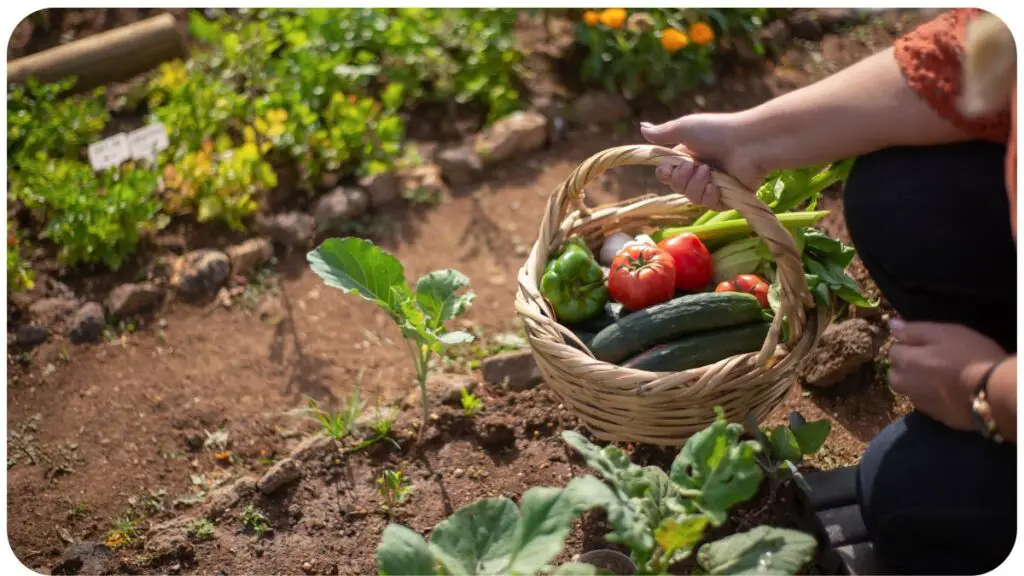Welcome to the world of lunar gardening, where ancient wisdom meets modern horticulture. Have you ever wondered if the phases of the moon could affect plant growth? Well, you’re not alone.
For centuries, gardeners around the world have looked to the sky for guidance in tending to their crops. In this guide, we’ll explore the fascinating relationship between lunar cycles and optimal plant growth. Get ready to unlock the secrets of nature’s celestial rhythm and watch your garden thrive like never before.
| Key Takeaways |
|---|
| 1. Understanding the influence of lunar phases on plant growth is crucial for optimizing gardening practices. |
| 2. Aligning gardening activities such as planting, pruning, and harvesting with lunar cycles can lead to healthier plants and increased yields. |
| 3. Soil preparation, watering, pest control, and companion planting can all be enhanced by following a lunar gardening approach. |
| 4. Dispelling common myths and misconceptions about lunar gardening is essential for making informed decisions. |
| 5. Beginners can start small, observe, and experiment with lunar gardening techniques to gradually incorporate them into their gardening routine. |
2. Understanding Lunar Cycles
Before diving into the specifics of lunar gardening, let’s take a moment to understand the basics of lunar cycles. The moon goes through eight distinct phases, each lasting approximately 3.5 days. These phases, including new moon, waxing crescent, first quarter, waxing gibbous, full moon, waning gibbous, third quarter, and waning crescent, are determined by the moon’s position relative to the Earth and the sun.
Implementing organic gardening techniques enhances soil vitality and fosters robust plant growth. By prioritizing natural methods, such as composting and companion planting, gardeners cultivate ecosystems that thrive harmoniously.” Improve Soil Health
| Lunar Phase | Duration | Description |
|---|---|---|
| New Moon | 1-2 days | The moon is not visible from Earth, marking the beginning of a new lunar cycle. |
| Waxing Crescent | 3-4 days | A small sliver of the moon is visible, growing larger each night. |
| First Quarter | 1-2 days | Half of the moon is illuminated, resembling a perfect semicircle. |
| Waxing Gibbous | 3-4 days | The illuminated portion of the moon continues to grow, approaching a full moon. |
| Full Moon | 1-2 days | The entire face of the moon is illuminated, shining brightly in the night sky. |
| Waning Gibbous | 3-4 days | The illuminated portion of the moon begins to shrink after reaching its peak at the full moon. |
| Third Quarter | 1-2 days | Half of the moon is illuminated, but on the opposite side from the first quarter. |
| Waning Crescent | 3-4 days | A thin sliver of the moon is visible, shrinking each night until the next new moon. |
Understanding these phases is crucial for harnessing their power in your garden.
3. The Influence of Lunar Phases on Plant Growth

Now that we grasp the concept of lunar cycles, let’s delve into how they impact plant growth. The moon’s gravitational pull affects not only the tides but also the moisture content in the soil. During the waxing phase, when the moon is growing larger, moisture is drawn upward, promoting germination and growth. Conversely, during the waning phase, moisture moves downward, encouraging root development and strong, healthy plants.
A deeper understanding of the garden microbiome empowers gardeners to nurture healthier plant environments. By promoting beneficial microbial communities, gardeners can fortify plants against pests and diseases, fostering resilience and vitality in their green spaces.” Healthier Garden Microbiome
| Lunar Phase | Influence on Plant Growth |
|---|---|
| New Moon | Ideal for planting above-ground crops as energy is focused on leafy growth. |
| Waxing Crescent | A favorable time for sowing seeds and transplanting seedlings, promoting vigorous growth. |
| First Quarter | Best for planting and transplanting, especially for crops that produce fruits and grains. |
| Waxing Gibbous | Beneficial for pruning, fertilizing, and nurturing plants as they reach their peak growth phase. |
| Full Moon | Perfect for harvesting, as plants are at their maximum vitality and nutritional value. |
| Waning Gibbous | Suitable for pruning, weeding, and removing pests as plants begin to slow their growth. |
| Third Quarter | Ideal for planting below-ground crops, focusing energy on root development and strong foundations. |
| Waning Crescent | A time for resting and rejuvenating the soil, preparing it for the next planting cycle. |
By aligning your gardening activities with the phases of the moon, you can optimize plant growth and maximize yields.
4. Planning Your Garden with Lunar Cycles

Now that we understand how lunar phases influence plant growth, it’s time to put that knowledge into action. Planning your garden according to lunar cycles involves syncing your planting, pruning, and harvesting activities with the phases of the moon. By following a lunar calendar and timing your tasks accordingly, you can work in harmony with nature to create a thriving garden ecosystem.
Lunar Calendar for Planting
| Month | Lunar Phase | Recommended Activities |
|---|---|---|
| March | First Quarter | Plant cool-season crops like lettuce, spinach, and peas. |
| April | Waxing Gibbous | Sow seeds for tomatoes, peppers, and cucumbers indoors or in a greenhouse. |
| May | Full Moon | Transplant seedlings for warm-season crops such as corn, beans, and squash. |
| June | Waning Gibbous | Focus on pruning and shaping fruit trees and berry bushes. |
| July | Third Quarter | Plant root crops like carrots, potatoes, and onions. |
| August | Waning Crescent | Harvest crops at their peak, preserving excess for the winter months. |
By following this lunar calendar, you can optimize planting times and increase the success rate of your garden.
5. Lunar Cycles and Soil Preparation
Soil preparation is a crucial step in gardening, and lunar cycles can play a significant role in this process. During the waxing phase, focus on turning and aerating the soil to promote better drainage and oxygenation. This is also an excellent time to add organic matter such as compost or manure, as the soil’s receptivity is heightened.
Transforming kitchen scraps into nutrient-rich compost enriches soil fertility and sustains plant growth. By repurposing organic waste, gardeners contribute to sustainable gardening practices while reducing waste and fostering a greener, more bountiful environment.” Kitchen Scraps into Garden Gold
Conversely, during the waning phase, concentrate on weed removal and soil stabilization. The decreasing moonlight encourages slower weed growth, making it easier to eradicate them from your garden beds. Additionally, this phase is optimal for applying mulch to help retain moisture and suppress weed growth.
Soil Preparation Checklist
| Lunar Phase | Soil Preparation Tasks |
|---|---|
| New Moon | Turn and aerate the soil, incorporating compost or manure for added nutrients. |
| Waxing Crescent | Begin sowing cover crops to enrich the soil and prevent erosion. |
| First Quarter | Test soil pH and make necessary adjustments with lime or sulfur. |
| Waxing Gibbous | Apply organic fertilizers to promote healthy microbial activity in the soil. |
| Full Moon | Take soil samples for analysis to assess nutrient levels and deficiencies. |
| Waning Gibbous | Mulch garden beds to conserve moisture and suppress weed growth. |
| Third Quarter | Remove weeds and unwanted vegetation, ensuring a clean and tidy garden bed. |
| Waning Crescent | Apply a layer of compost or mulch to protect the soil and prepare it for the next planting cycle. |
By following this soil preparation checklist aligned with lunar cycles, you can create an optimal growing environment for your plants.
6. Watering Plants According to Lunar Cycles
Proper watering is essential for plant health, and timing is key. Lunar cycles can help guide your watering schedule, ensuring that plants receive the right amount of moisture at the right time. During the waxing phase, when moisture is drawn upward, focus on deep watering to encourage strong root development.
Conversely, during the waning phase, when moisture moves downward, reduce watering frequency to prevent waterlogging and promote efficient nutrient absorption. Pay attention to the lunar calendar and adjust your watering schedule accordingly to avoid overwatering or underwatering your plants.
Watering Guidelines
| Lunar Phase | Watering Recommendations |
|---|---|
| New Moon | Deep water plants to encourage root growth and establishment. |
| Waxing Crescent | Monitor soil moisture levels and adjust watering as needed to prevent dehydration. |
| First Quarter | Water plants early in the day to minimize evaporation and ensure adequate hydration. |
| Waxing Gibbous | Use drip irrigation or soaker hoses to deliver water directly to the root zone, conserving moisture. |
| Full Moon | Water sparingly, allowing plants to absorb moisture from the soil and atmosphere. |
| Waning Gibbous | Reduce watering frequency, allowing soil to dry out slightly between waterings. |
| Third Quarter | Water deeply but infrequently, promoting deep root penetration and drought tolerance. |
| Waning Crescent | Scale back watering as plants enter a dormant phase, focusing on established perennials and trees. |
By following these watering guidelines aligned with lunar cycles, you can optimize water usage and promote healthier, more resilient plants.
7. Pruning and Harvesting in Harmony with Lunar Phases
Pruning and harvesting are essential tasks in garden maintenance, and timing them according to lunar phases can enhance their effectiveness. During the waxing phase, focus on pruning to encourage vigorous growth and shape your plants for optimal structure.
This is also a good time to harvest crops that are intended for long-term storage, as their moisture content is higher.
Maximizing plant growth with lunar cycles involves harnessing the natural rhythms of celestial bodies to optimize gardening efforts. By aligning planting and maintenance tasks with lunar phases, gardeners can enhance productivity and yield in their gardens.” Lunar Cycles Gardener’s Guide
Conversely, during the waning phase, prioritize selective pruning to remove dead or diseased branches and promote airflow within the canopy. This phase is also ideal for harvesting crops that are intended for immediate consumption, as their flavors and nutritional content may be more pronounced.
Pruning and Harvesting Guidelines
| Lunar Phase | Pruning and Harvesting Recommendations |
|---|---|
| New Moon | Prune fruit trees and grapevines to stimulate new growth and improve fruit quality. |
| Waxing Crescent | Harvest leafy greens and herbs for fresh consumption, taking care to avoid overharvesting. |
| First Quarter | Prune shrubs and bushes to maintain shape and encourage bushier growth. |
| Waxing Gibbous | Harvest fruits and vegetables for canning or preserving, selecting those at peak ripeness. |
| Full Moon | Prune flowering shrubs and trees after they have finished blooming, shaping them for the next growing season. |
| Waning Gibbous | Harvest root crops such as carrots and potatoes for storage, curing them in a cool, dark place. |
| Third Quarter | Prune dormant trees and shrubs to remove dead or crossing branches, improving overall health and vigor. |
| Waning Crescent | Harvest seeds from annual plants for saving and replanting in the next growing season. |
By following these pruning and harvesting guidelines aligned with lunar cycles, you can maintain a healthy and productive garden year-round.
8. Lunar Cycles and Pest Control

Pest control is a constant battle for gardeners, but lunar cycles can offer a natural solution. During the waxing phase, when pest activity is at its peak, focus on proactive measures such as introducing beneficial insects and applying organic pest deterrents. This is also a good time to monitor plants for signs of infestation and take preemptive action to prevent widespread damage.
Conversely, during the waning phase, when pest activity diminishes, concentrate on targeted pest removal and sanitation practices. This phase is ideal for handpicking pests, removing affected plant parts, and cleaning garden tools to prevent the spread of disease.
Pest Control Strategies
| Lunar Phase | Pest Control Recommendations |
|---|---|
| New Moon | Introduce beneficial insects such as ladybugs and lacewings to control aphids and other pests. |
| Waxing Crescent | Apply organic pest deterrents such as neem oil or insecticidal soap to deter pest activity. |
| First Quarter | Monitor plants for signs of pest infestation and take preemptive action to prevent widespread damage. |
| Waxing Gibbous | Set up barriers such as row covers or netting to protect vulnerable plants from pest attacks. |
| Full Moon | Handpick pests such as caterpillars and beetles from plants, removing them manually to prevent damage. |
| Waning Gibbous | Remove and dispose of affected plant parts to eliminate hiding places for pests and reduce their population. |
| Third Quarter | Clean garden tools and equipment to prevent the spread of disease and pathogens between plants. |
| Waning Crescent | Apply diatomaceous earth or beneficial nematodes to the soil to control soil-dwelling pests such as grubs and larvae. |
By implementing these pest control strategies aligned with lunar cycles, you can effectively manage pests while minimizing the use of harmful chemicals in your garden.
Creating a lush garden oasis without overspending involves strategic gardening hacks and resourceful practices. By maximizing space utilization, water efficiency, and plant selection, gardeners can achieve vibrant and thriving gardens on a budget.” Lush Garden Oasis Hacks
9. Companion Planting and Lunar Cycles
Companion planting is a gardening technique that involves planting mutually beneficial crops together to enhance growth and deter pests. When combined with lunar cycles, companion planting can become even more effective, creating a harmonious ecosystem in your garden. During the waxing phase, focus on planting companions that support each other’s growth and health.
For example, planting aromatic herbs like basil and cilantro alongside tomatoes can help repel pests and improve flavor. Additionally, pairing nitrogen-fixing legumes like beans and peas with heavy feeders like corn and squash can enrich the soil and promote healthy growth.
Conversely, during the waning phase, concentrate on planting companions that complement each other’s growth habits and nutrient needs. For instance, planting tall, sun-loving crops like corn or sunflowers alongside low-growing, shade-tolerant plants like lettuce or spinach can maximize space and sunlight utilization.
Companion Planting Combinations
| Lunar Phase | Companion Planting Combinations |
|---|---|
| New Moon | Plant marigolds around tomato plants to deter nematodes and repel aphids. |
| Waxing Crescent | Interplant carrots with onions or leeks to deter carrot rust fly and onion maggots. |
| First Quarter | Pair strawberries with borage to attract pollinators and improve fruit production. |
| Waxing Gibbous | Grow beans or peas alongside corn or squash to provide nitrogen and support vertical growth. |
| Full Moon | Intercrop lettuce with radishes to maximize space and minimize weed competition. |
| Waning Gibbous | Plant aromatic herbs like rosemary or sage near brassicas to deter cabbage moths and aphids. |
| Third Quarter | Pair cucumbers with dill or fennel to attract beneficial insects and deter cucumber beetles. |
| Waning Crescent | Interplant basil with tomatoes to improve flavor and repel tomato hornworms. |
By following these companion planting combinations aligned with lunar cycles, you can create a biodiverse and resilient garden ecosystem that thrives year-round.
10. Maximizing Crop Yield with Lunar Cycles
Ultimately, the goal of lunar gardening is to maximize crop yield and quality while minimizing inputs and environmental impact. By harnessing the power of lunar cycles, you can achieve higher yields, healthier plants, and a more sustainable garden ecosystem. During the waxing phase, focus on promoting vigorous growth and establishing strong root systems.
Conversely, during the waning phase, concentrate on maintenance tasks such as pruning, harvesting, and pest control to ensure optimal plant health and productivity. By following a holistic approach that integrates lunar cycles with soil preparation, watering, pruning, and companion planting, you can unlock the full potential of your garden and enjoy bountiful harvests year after year.
Tips for Maximizing Crop Yield
| Lunar Phase | Tips for Maximizing Crop Yield |
|---|---|
| New Moon | Start seeds indoors or in a greenhouse to give them a head start before transplanting outdoors. |
| Waxing Crescent | Provide adequate support for climbing plants like cucumbers or beans to prevent damage and encourage upward growth. |
| First Quarter | Use organic mulch such as straw or shredded leaves to suppress weeds, retain moisture, and regulate soil temperature. |
| Waxing Gibbous | Apply compost tea or liquid fertilizer to replenish nutrients and promote healthy microbial activity in the soil. |
| Full Moon | Harvest crops early in the morning when they are at their peak freshness and nutritional value. |
| Waning Gibbous | Rotate crops annually to prevent soil depletion and minimize the risk of pest and disease buildup. |
| Third Quarter | Save seeds from open-pollinated varieties for replanting in future seasons, preserving genetic diversity in your garden. |
| Waning Crescent | Take time to observe and connect with your garden, noticing subtle changes and responding to the needs of your plants. |
By incorporating these tips for maximizing crop yield aligned with lunar cycles, you can achieve a thriving and productive garden that sustains you and your family for years to come.
11. Common Myths and Misconceptions
Despite the growing popularity of lunar gardening, there are several common myths and misconceptions that can lead to confusion among gardeners. It’s essential to separate fact from fiction to make informed decisions about your gardening practices.
Debunking Lunar Gardening Myths
| Myth | Reality |
|---|---|
| Planting only during full moons | While full moons are considered auspicious for certain activities like harvesting, planting can occur throughout the lunar cycle, with different phases offering unique benefits. |
| Lunar gardening guarantees success | While lunar gardening can enhance plant growth and productivity, it’s not a guarantee of success. Other factors such as soil quality, climate, and plant variety also play significant roles. |
| The moon’s influence is magical | The influence of lunar cycles on plant growth is rooted in science, particularly gravitational forces and moisture movement in the soil. It’s a natural phenomenon, not magic. |
| You must follow the lunar calendar | While a lunar calendar can be a helpful tool for planning, it’s not mandatory. Observing lunar phases and adapting gardening practices accordingly is more important than strict adherence. |
By dispelling these myths and misconceptions, gardeners can approach lunar gardening with a clearer understanding and greater confidence.
12. Tips for Beginners
If you’re new to lunar gardening, getting started may seem daunting at first. However, with a few simple tips, you can ease into this holistic approach and reap the rewards of a thriving garden.
Beginner Tips for Lunar Gardening
- Start Small: Begin with a small plot or a few containers to experiment with lunar gardening techniques without feeling overwhelmed.
- Observe and Learn: Take time to observe your garden and note any changes in plant growth and health throughout the lunar cycle.
- Keep Records: Maintain a gardening journal to track planting dates, lunar phases, and gardening activities, allowing you to learn from your experiences.
- Stay Flexible: Be willing to adjust your gardening schedule based on weather conditions, plant needs, and your own availability.
- Connect with Others: Join online forums or local gardening groups to share experiences, ask questions, and learn from fellow lunar gardeners.
By following these tips for beginners, you can embark on your lunar gardening journey with confidence and enthusiasm.
13. Conclusion
In conclusion, harnessing lunar cycles for optimal plant growth is a time-honored tradition that offers numerous benefits for gardeners of all levels. By aligning your gardening activities with the phases of the moon, you can promote healthier plants, increase yields, and create a more sustainable garden ecosystem.
Remember to observe, experiment, and adapt your practices based on your garden’s unique needs and conditions. With patience, dedication, and a little lunar guidance, your garden will flourish like never before.
Further Reading
- How the Phases of the Moon Affect the Growth of Plants: Explore the impact of lunar phases on plant growth and learn how to optimize gardening practices accordingly.
- Illuminating Gardens: Harnessing Lunar Cycles for Enchanting Moon Gardens: Discover the beauty of moon gardens and how lunar cycles can enhance the magic of your outdoor space.
- The Lunar Influence on Gardening: Gain insights into the lunar influence on gardening practices and learn practical tips for maximizing plant growth.
FAQs
How do lunar phases affect plant growth?
Lunar phases influence plant growth by affecting moisture movement in the soil and gravitational forces, which can impact seed germination, root development, and overall plant vitality.
Can I plant during any phase of the moon?
While planting can occur throughout the lunar cycle, certain phases like the waxing phase are considered ideal for activities like sowing seeds and transplanting, while others like the waning phase are better suited for tasks such as pruning and harvesting.
What are some benefits of lunar gardening?
Lunar gardening can promote healthier plants, increase yields, and create a more sustainable garden ecosystem by aligning gardening activities with the natural rhythms of the moon.
How can I get started with lunar gardening?
Begin by observing lunar phases and their effects on your garden, then gradually incorporate lunar gardening techniques such as planting, pruning, and harvesting according to the moon’s cycle.
Are there any myths or misconceptions about lunar gardening?
Yes, common myths include the belief that planting should only occur during full moons or that lunar gardening guarantees success. It’s essential to separate fact from fiction and approach lunar gardening with a clear understanding of its principles and practices.

For 15 years, Hellen James has worked in the gardening industry as an expert and landscape designer. During her career, she has worked for a variety of businesses that specialize in landscaping and gardening from small firms to large corporations.

